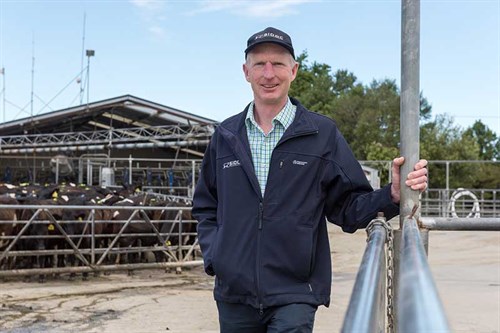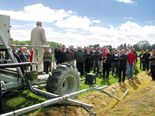Less nitrogen proves great results for dairy farm
Lincoln University Dairy Farm (LUDF) proves dairy farmers do not miss on great results when reducing nitrogen on pasture
The SIDDC (South Island Dairying Development Centre) push for the determined farmers to focus on productivity and efficiency to lift profitability, and still operate within their historical environmental footprint.

In 2014-2015, fully irrigated, pasture based Canterbury dairy farm voluntarily chose to reduce its use of imported feed and nitrogen fertilise when faced with a declining milk price and changing nutrient regulations.
They limited their estimated nitrogen (N) leaching to match the stocking rate to the revised feed supply, while still maintaining the top 5 percent in profitability.
Executive Director of SIDDC, Ron Pellow says that low milk pay-outs and chosen constrained farm nutrient losses have pushed efficiency levels to where it was once thought unattainable.
Arron Hutton who works with the LUDF team anda Principal Consultant for Ravensdown Environmental, describes their partnership with SIDDC, along with Lincoln University, DairyNZ, LIC, Plant & Food Research, AgResearch and SIDE as a natural alignment for the co-operative.
He says the Ravensdown environmental team and agri managers work with farmers to be smarter with inputs when improving their farming systems.
The team have been undertaking whole farm soil testing at LUDF for several years, allowing for enough data gathered to see trends across each paddock to ensure maximum performance out of the pastures.
510 KgMS/cow and 1780 KgMS/ha has resulted from the average performance for the past three seasons, running a similar farm system.
An average of $3.70 per KgMS of working farm expenses resulted in a reasonable level of operating profit considering the volatile payout over this time.
Nitrate leaching losses are now more than 25 per cent lower than the 2009-2013 baseline period, the Overseer estimates.
These satisfying results have been achieved by further intensifying the focus on pasture management and by operating with a better match of feed supply (pasture) and stocking rates, says Ron.
Ron says this lifts farm efficiency, improves performance, profitability and reduces nutrient loss. Continuing to look at inputs and challenge farmers on the assumptions that were once justified, inputs now have the opportunity to generate maximum benefit.
Keep up to date in the industry by signing up to Farm Trader's free newsletter or liking us on Facebook


.jpeg)
.jpg)
.jpeg)

.jpg)
.jpeg)
.jpg)
.jpeg)







